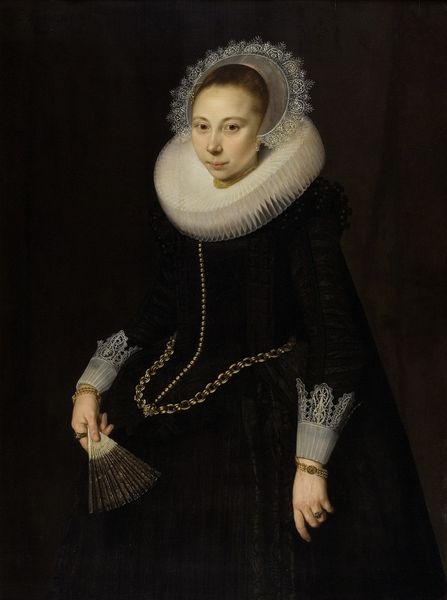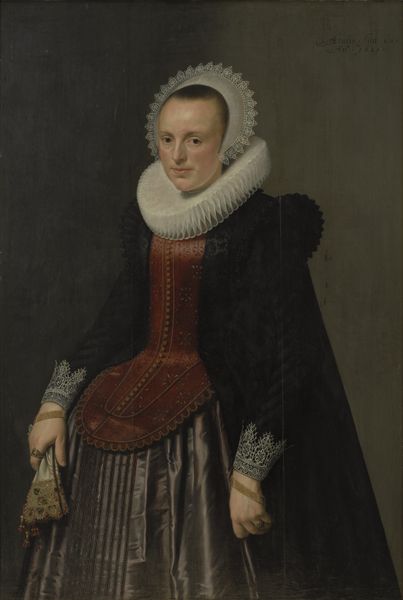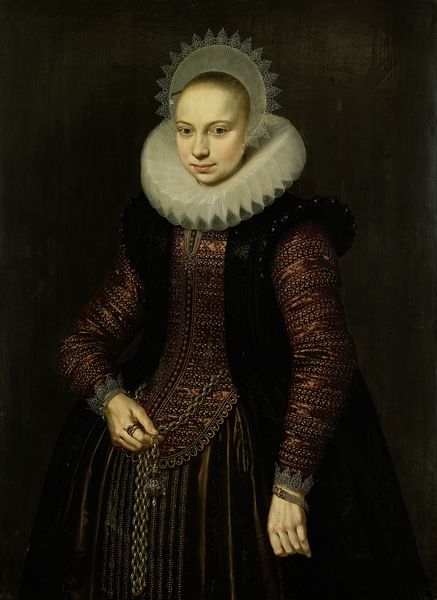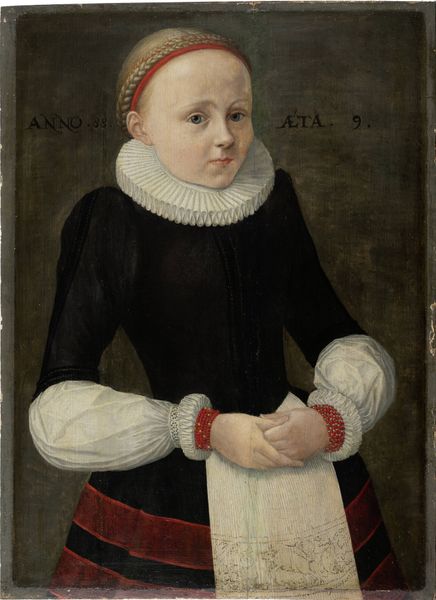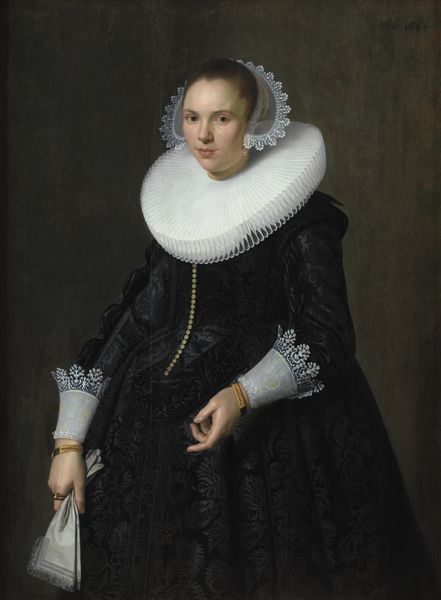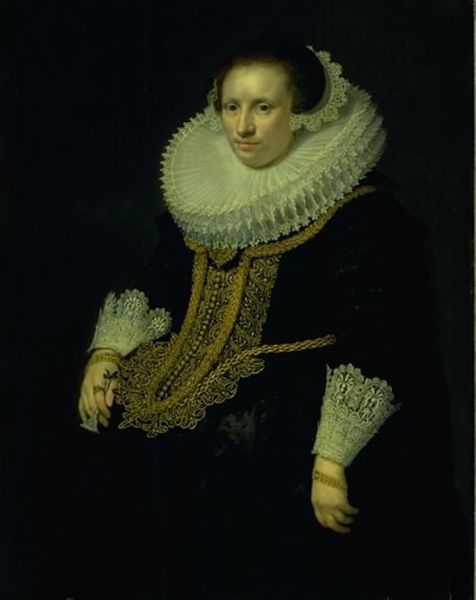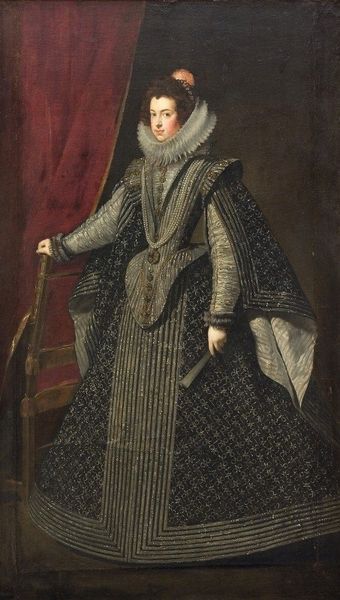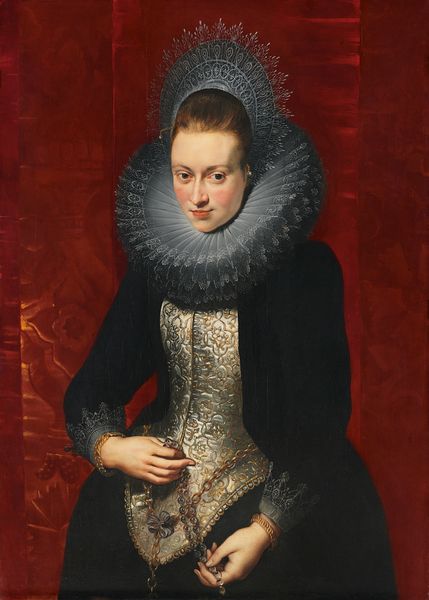
painting, oil-paint
#
portrait
#
baroque
#
dutch-golden-age
#
painting
#
oil-paint
#
history-painting
#
realism
Dimensions: support height 122 cm, support width 88.9 cm, outer size depth 6.5 cm
Copyright: Rijks Museum: Open Domain
Curator: Here we have an interesting example of Dutch Golden Age portraiture. This is "Portrait of Trijntje Tijsdr van Nooij (1606/07-1646)," dating from 1631. Editor: Stark. Severely elegant, perhaps. I’m struck by the somberness; it's as if she’s daring you to find her amusing. It's incredibly subdued, considering the typical exuberance of the Baroque period. Curator: Agreed. Notice the heavy use of blacks and grays, offset by the crisp white of her ruff and cap. It definitely has a somber quality. The skill employed, I think, draws us in, compelling us to read it closely. What materials catch your eye here? Editor: Absolutely the costume. This immaculate black gown, constructed from multiple layers, that hints at layers of dark opulence beneath. What dyestuffs produced that depth of color in 1631? Sourcing black pigment has always been difficult – from charcoal to ivory black and various mineral sources – imagine the process for clothing someone entirely in it. And those fragile, fingerless gloves...the labor is truly something! Curator: Indeed. The texture in those blacks is superb. And she's holding an exquisitely delicate pair of gloves, or mitts perhaps? These tiny, intricate things would have taken someone days to complete. She appears as though she might offer one as a greeting. Almost. Editor: Perhaps. Or, she dares anyone to even imagine needing it from her. There's an undeniable sense of reserved power, don't you think? Dutch portraiture so wonderfully preserved details related to status. I am thinking of the small coat of arms in the painting’s upper right corner. Curator: Yes, precisely. And despite the apparent realism of the overall style, the image is undoubtedly idealized, presenting her in a very specific social role. And yet, perhaps it tells us something about her inner state as well, a kind of dignified melancholia. It's a conversation starter to consider just what exactly realism looked like in Dutch paintings, what the patrons commissioned and paid for. Editor: All that sombre material, its careful production and precise assembly, has a deep and communicative darkness of intent in this moment; a true portrait, both intimate and impersonal, revealing much. We can learn an extraordinary amount about global economies, gendered labour and more from her dress. Curator: An intimate, yet guarded portrayal indeed. It's always striking how much quiet emotional power resides in these portraits of the period. Editor: I will take this careful materialism over romantic fantasies anytime! The materials never lie!
Comments
No comments
Be the first to comment and join the conversation on the ultimate creative platform.


